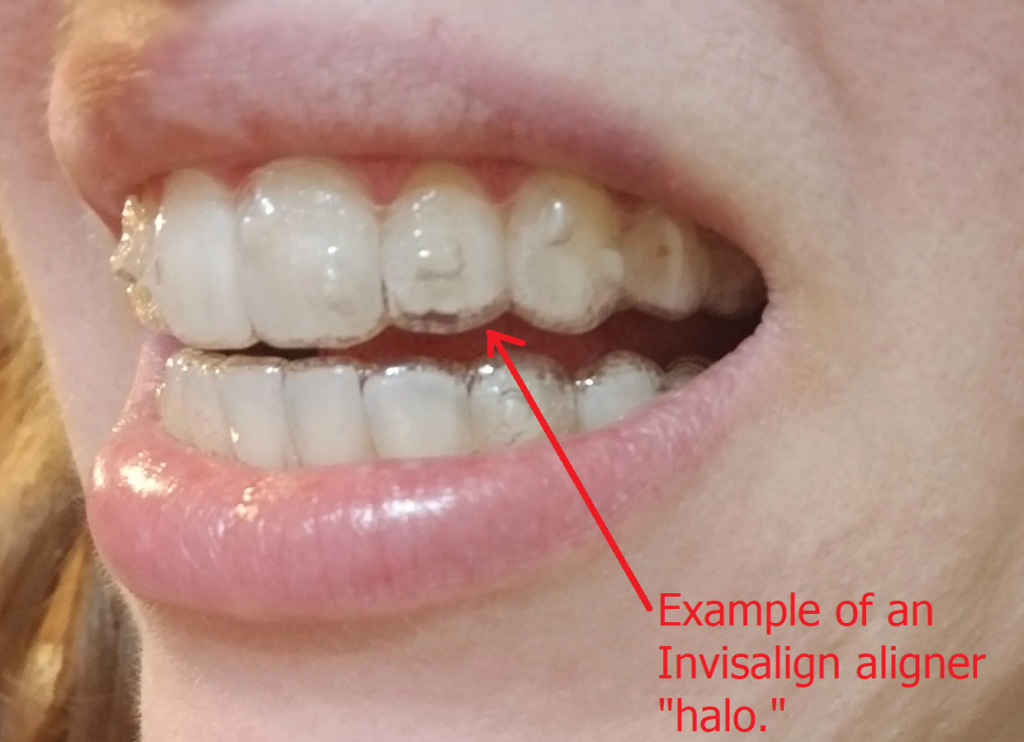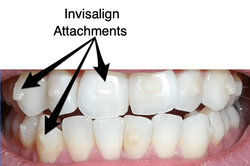Leading Factors to Pick Invisalign Over Other Orthodontic Treatments
Leading Factors to Pick Invisalign Over Other Orthodontic Treatments
Blog Article
Invisalign vs. Conventional Dental braces: Which Choice Is Right for You?
When thinking about orthodontic treatment, the option in between Invisalign and standard braces offers numerous vital aspects that merit mindful evaluation. Invisalign offers a very discreet choice with removable aligners, while traditional braces give an extra visible yet efficient remedy for serious misalignment.
Overview of Treatment Alternatives

In contrast, standard braces contain metal braces and cords that are bound to the teeth. This technique uses continual pressure with time to achieve alignment. While effective for complicated orthodontic concerns, traditional braces call for normal gos to for changes and can present obstacles in preserving oral hygiene because of the difficulty of cleaning about brackets and wires.
Both alternatives have their merits, and the choice frequently depends upon details dental problems, way of living choices, and individual conformity. Inevitably, consulting an orthodontic specialist is important for identifying the most suitable therapy plan customized to private requirements. Comprehending the subtleties of each choice can considerably affect the general success of orthodontic treatment.
Aesthetic Considerations
A substantial element influencing the option between Invisalign and standard braces is the aesthetic charm each therapy uses. Invisalign aligners are crafted from clear plastic, making them practically unseen when used.
On the other hand, traditional braces are composed of steel brackets and wires, which can be much more recognizable. While innovations in orthodontic innovation have actually brought about the growth of smaller sized braces and tinted elastics, typical dental braces still maintain a more obvious profile. For some people, the presence of braces might discourage them from looking for required treatment.
Inevitably, the option between Invisalign and traditional braces may hinge on personal preferences regarding appearances. Individuals that focus on discretion usually lean towards Invisalign, while those that are much less worried concerning exposure may decide for standard braces. Recognizing the visual effects of each alternative is crucial for making a notified choice that straightens with one's way of life and preferences.
Convenience and Convenience

In terms of benefit, Invisalign aligners are detachable, allowing individuals to appreciate their favorite foods without constraint and preserve ideal oral health. Brushing and flossing are simplified, as the aligners can be secured during these regimens, whereas typical braces need careful navigating around brackets and cables.
In contrast, typical dental braces necessitate regular changes, making them much less practical for those with busy routines. In general, the comfort and ease of Invisalign make it an appealing option for lots of individuals seeking orthodontic therapy.
Treatment Period and Effectiveness
While both Invisalign and standard dental braces are effective here are the findings in dealing with oral misalignments, the period of therapy can differ considerably between both alternatives. Usually, Invisalign treatment can take anywhere from 12 to 18 months, depending on the intricacy of the instance. The clear aligners function by gradually moving teeth into their preferred settings, and routine follow-ups with an orthodontist aid guarantee progression continues to be on track.
In contrast, typical dental braces typically require a longer commitment, usually varying from 18 months to three years. This is due to their fixed nature and making use of cords and brackets, which can be a lot more efficient for severe misalignments and complicated situations (Invisalign). The therapy efficiency of traditional braces is well-documented, as they permit accurate changes and higher control over tooth movement
Ultimately, the choice between Invisalign and conventional dental braces may rest on both the anticipated treatment duration and the details oral issues handy. Consulting with an orthodontist is vital, as they can provide customized recommendations based upon specific needs, ensuring the chosen approach lines up with desired outcomes and timeframes.
Price Contrast and Insurance Policy Options
Price plays a considerable function in the decision-making process for people thinking about orthodontic treatment, whether choosing Invisalign or typical dental braces. Usually, the cost of Invisalign varieties from $3,000 to $8,000, while traditional dental braces typically cost in between $2,000 and $6,000. Variables affecting these prices include the intricacy of the instance, the duration of therapy, and geographical area.
Insurance policy protection can substantially influence out-of-pocket expenses. Several dental insurance policy strategies supply partial protection for orthodontic treatments, however the specifics can differ extensively. It is important for clients to review their insurance coverage to figure out the Extra resources degree of coverage for either alternative. Normally, standard dental braces might be extra frequently covered by insurance policy strategies compared to Invisalign, which some insurance providers classify as an aesthetic procedure.
Additionally, a number of orthodontic methods offer versatile layaway plan, making both treatment options extra easily accessible. Clients must ask about prospective funding alternatives and discount rates for upfront repayments. Evaluating the complete cost, consisting of insurance advantages and repayment plans, is important for making a notified choice that lines up with both visual preferences and spending plan factors to consider.

Final Thought
In summary, the selection between Invisalign and traditional braces rests on multiple variables, consisting of visual preferences, comfort, treatment period, and cost. Invisalign offers a discreet, detachable option that facilitates oral hygiene and nutritional versatility, while standard braces might be a lot more suitable for complicated dental problems and commonly come with a reduced rate point. Eventually, examination with an orthodontist is necessary to analyze specific conditions and determine one of the most ideal treatment choice for attaining go to my site optimal oral placement.
When considering orthodontic treatment, the choice in between Invisalign and conventional braces provides several essential factors that merit cautious analysis.Contrasting Invisalign and traditional braces exposes unique treatment alternatives for orthodontic modification.While both Invisalign and typical braces are effective in fixing oral misalignments, the duration of therapy can vary substantially in between the two alternatives.Expense plays a significant duty in the decision-making process for people considering orthodontic therapy, whether choosing for Invisalign or traditional braces.In summary, the option in between Invisalign and standard dental braces pivots on multiple factors, including aesthetic choices, convenience, therapy duration, and expense.
Report this page